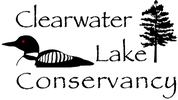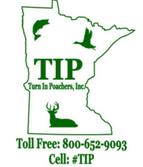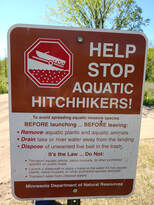Why is the Clearwater loon nesting project important?
by Jeff Zernov
There are more loons in Minnesota-an estimated 4,600 territorial pair-than in all of the USA (except Alaska). Since the 1900’s, the Minnesota Loon nesting range has shrunk by about 20%
This year with 9-nesting pair and 11-chicks to fledgling stage, Clearwater accounts for .25% of all nesting loon pairs in Minnesota (there are 11,842 lakes over 10-acres in the state.) Compare that to Namakan Lake in the BWCA which is 25-time bigger than Clearwater, has ideal loon nesting habitat and only produces an average of 25 chicks.
In the recent past, Clearwater lake has produced up to 25% of all loon chicks in Crow Wing County.
Extensive banding and observation of marked loons in northern Wisconsin has shown that loons first return to the breeding grounds at age 2-5 years, with males tending to return nearer to their natal territory than females. Both sexes tend to wander and use many different lakes as "floaters" for 2 to 3 years before settling. Males and females both show a striking age-dependent pattern in the means they use to gain a territory: when 4-5 years old, they usually settle in a vacant territory with a mate and thus found a new territory. If they have not acquired a territory by 6-8 years of age, however, they usually attempt to seize a territory from an established owner after a violent and prolonged territorial battle. Such battles can be dangerous. In fact, about one-third of all territorial takeovers among males result in the death of the displaced male owner.
The average loon pair produces 5-10 fledgling’s over their life time. Clearwater loons produced many times that.
Loons are under attack from the loss of breeding habitat, direct disturbance with humans, water level fluctuation flooding nests, inattentive boating and skiing, contaminants including lead and mercury and hazards in the wintering grounds from oil spills.
Here on Clearwater we tend to take the loons and chicks for granted because they are so abundant but that can change very quickly. Please pay attention when boating, don’t chase loons on jet skis, don’t try and feed loons or loon chicks. Stay away for the nesting platforms in the spring, respect their territory, remember they were here first.
See the Brainerd Dispatch Article on sharing our lakes with the loons.
The Dispatch also has another good article about the National Loon Center and the Fifty Lake Loon Conservancy.
This year with 9-nesting pair and 11-chicks to fledgling stage, Clearwater accounts for .25% of all nesting loon pairs in Minnesota (there are 11,842 lakes over 10-acres in the state.) Compare that to Namakan Lake in the BWCA which is 25-time bigger than Clearwater, has ideal loon nesting habitat and only produces an average of 25 chicks.
In the recent past, Clearwater lake has produced up to 25% of all loon chicks in Crow Wing County.
Extensive banding and observation of marked loons in northern Wisconsin has shown that loons first return to the breeding grounds at age 2-5 years, with males tending to return nearer to their natal territory than females. Both sexes tend to wander and use many different lakes as "floaters" for 2 to 3 years before settling. Males and females both show a striking age-dependent pattern in the means they use to gain a territory: when 4-5 years old, they usually settle in a vacant territory with a mate and thus found a new territory. If they have not acquired a territory by 6-8 years of age, however, they usually attempt to seize a territory from an established owner after a violent and prolonged territorial battle. Such battles can be dangerous. In fact, about one-third of all territorial takeovers among males result in the death of the displaced male owner.
The average loon pair produces 5-10 fledgling’s over their life time. Clearwater loons produced many times that.
Loons are under attack from the loss of breeding habitat, direct disturbance with humans, water level fluctuation flooding nests, inattentive boating and skiing, contaminants including lead and mercury and hazards in the wintering grounds from oil spills.
Here on Clearwater we tend to take the loons and chicks for granted because they are so abundant but that can change very quickly. Please pay attention when boating, don’t chase loons on jet skis, don’t try and feed loons or loon chicks. Stay away for the nesting platforms in the spring, respect their territory, remember they were here first.
See the Brainerd Dispatch Article on sharing our lakes with the loons.
The Dispatch also has another good article about the National Loon Center and the Fifty Lake Loon Conservancy.


